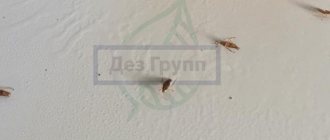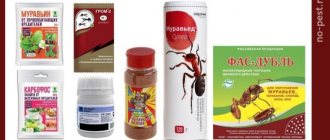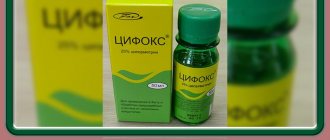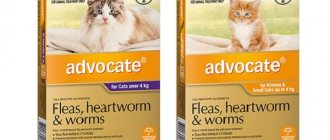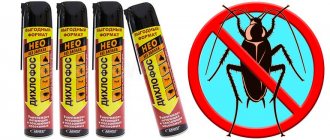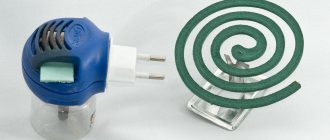Owners who love and care for their pets regularly carry out not only deworming, but also flea and tick treatment. In addition, these insects carry many infectious and parasitic diseases (typhus, cucumber tapeworm, piroplasmosis/babesiosis and others). And how much anxiety and discomfort these unwanted “residents” cause: itching, rash, hair loss, loss of appetite.
Some owners buy sprays, others buy drops on the withers, and still others use collars for their pets. And all these methods are good, but each in their own way. But now we will talk specifically about collars, how they work, what is included in their composition, how often they need to be changed, and, most importantly, how to choose them correctly.
What types of collars are there and how do they work?
A collar can kill a parasite only in one case, when the insect bites the dog and drinks blood. But if this happens, the risk that the animal will become infected with a serious disease is extremely high. It is extremely rare that toxins penetrate into the blood, but this happens if the manufacturer has released a low-quality product for sale for the sake of its profit. The active substance simply accumulates in the epidermis. In other cases, collars only repel fleas and ticks, “driving” them away from the dog. Killing insects requires a different approach.
Chemical.
These collars contain chemicals, even highly toxic ones (for insects). These substances are distributed throughout the pet’s fur and skin until the collar is on the animal and is “working”. Each collar has its own service life, do not forget to change it on time. Just remember that chemical collars can only be used on adult animals, not pregnant or lactating. Still, for the safety of your pet, it’s better to play it safe.
Biological.
The main components are natural insecticides (herbs, essential oils). These flea and tick collars are ideal for babies (puppies, kittens), for pregnant and lactating pets and for the weakened. The principle of operation is the same as that of chemical ones. The only plus is that biological ones are harmless, but not as effective as chemical ones.
Ultrasonic.
The most expensive. You've probably seen ultrasonic rodent and insect repellers on sale. The collar works on the same principle. The composition does not contain a single chemical or biological active substance. Although many say that the effectiveness of ultrasonic innovation is very doubtful. Insects “escape” from the dog due to the fact that they are greatly disturbed by ultrasonic waves of a special frequency, which only fleas and ticks “catch” (dogs and cats do not feel them).
Advantages and disadvantages of using collars
The advantages of wearing anti-flea and anti-tick collars include:
- their long validity period is 5-7 months, with constant wearing;
- simplicity and ease of use;
- safety, because the active substance does not enter the animal’s bloodstream, penetrating only into the skin.
The disadvantages include:
- it is not possible to provide control over the interaction of the active substance and the dog’s skin and coat, which does not guarantee constant protection;
- The long period of action of the tick collar declared by the manufacturer often reduces the attention of owners to protection issues, creating only the illusion of protection;
- the dog may experience discomfort from wearing a collar, especially at first and/or when it is rarely used;
- the collar often causes an allergic reaction, it is necessary to monitor your health condition, if necessary, stop using it and consult a doctor;
- there is a possibility of overdose of insectoacaricides when used together with drops on the withers or sprays;
- high cost of well-proven foreign-made collars.
Tick bite on a dog and comparative size of the tick after the bite
How to choose the right collar?
- First of all, decide which one you will take: chemical, biological or ultrasonic.
- Check out our ratings of flea and tick collars for dogs. The network is full of reviews from pet owners who talk about all the pros and cons.
- Think about how much you are willing to spend for the sake of your four-legged pet. Based on this, choose a collar. But don't skimp. You don't want the animal to get poisoned. And some cheap ones are completely useless, a waste of money.
- Be sure to get it from veterinary pharmacies or pet stores. They try to ensure that the goods are stored correctly. After all, if the conditions were violated, then the “repellent” properties of the collar will become much worse or disappear altogether.
- Read the ingredients, look at the expiration date (the fresher the collar, the better it will work).
- Remember that collars are like clothing; they are tailored to fit. It’s bad when the collar is both small and large.
Read the instructions! Responsible manufacturers indicate not only the concentration and name of the active substance, but also how dangerous it is. Some indicate that the collar is dangerous for children and for the animals themselves who try to lick or chew it. It’s worth thinking about whether such a toxic item is needed for prevention? In addition, a conscientious manufacturer will definitely indicate what antidote should be given to an animal or person in case of poisoning.
You can now see the current price of a flea collar for dogs and buy it right here:
Reviews and ratings of flea and tick collars by manufacturer
Now you will learn about the best flea and tick collars for dogs. There are more positive reviews from owners for this product. However, you should understand that even the most effective collar may cause your animal to be allergic. Therefore, you will have to select these means of protection very carefully.
Beaphar
Does not last long (compared to other manufacturers): from two to five months. It is not recommended for puppies, adolescents (up to 6 months), pregnant, lactating, or sick dogs to wear such a collar. The collar is “activated” only 5 days after it is put on the animal.
Foresto
The Foresto collar is available in 2 versions: for dogs up to 8 kg (38 cm collar tape) and heavier than 8 kilos (70 cm). Plus, the kit comes with reflective clips that allow you to make your pet visible in the dark. In addition, collars fight not only fleas, but also ticks, lice and lice at any stage of development (and not just adults).
Not recommended for use on puppies younger than seven weeks. But pregnant and lactating dogs can be attached to it only after consultation with a veterinarian.
Kiltix
Chemical collars, that is, are recommended only for adult and healthy dogs. Pregnant, nursing, young or sick/weak persons are prohibited from wearing. They begin to act only the next day, but they can be replaced in the eighth month after use. Imagine how concentrated they are that they can repel insects for such a long time.
Hartz UltraGuard Flea & Tick Collar
This collar not only repels parasites, but also serves as a reflective element - flicker. A great find for those walking in the late dark evenings. One cannot fail to mention the plus that the collar is not afraid of moisture. Therefore, if your dog swims in a river or gets caught in the rain, the collar will not lose its function. It will continue to repel ticks and fleas. It also begins to act the next day and can drive away parasites for the same amount of time. The only recommendation is not to use it on puppies that are less than 6 weeks old. In addition, there is no disgusting “chemical” smell, it is very pleasant and fresh.
Leopard
Collars are available for small, medium and large breeds. Not used for prophylaxis in puppies (or kittens) under two months of age. Sick, convalescent, pregnant, nursing dogs should also not be protected by such a collar. For them, you need to look for something safer. The protection lasts 4-5 months, but it is “activated” only after 24 hours. Collars protect against fleas and ixodid ticks.
Scalibor
Your pet will not be attacked by any crawling or flying insect for six months. Suitable for both pregnant and lactating dogs, but for puppies under 7 weeks it is better not to use this collar. There is a minus: all parasites from the “protected” animal will disappear only after a week. The collar is slowly gaining momentum.
How to use a tick collar for dogs
The collar is put on the dog, adjusted in size so that there is a gap of 1.0–1.5 cm between the animal’s neck and the collar, then the free end of the tape is passed through the clamp and the excess collar is cut off, leaving the end no more than 5 cm long.
The validity period of different types of accessories varies, but usually one is enough for the entire summer season. Then it should be changed, since the level of protection will already be reduced. The collars begin to work 2-3 days after the start of use. In the first days of using the collar, ixodid ticks may attack and attach to the animal, but after 1–2 days the parasites spontaneously fall off.
How to use a collar so that it “works”?
- First of all, wash the animal with a special anti-flea shampoo, and only after this procedure put on the purchased collar. If this is not done, then the parasites will “run across” towards the tailbone and tail. And there the effect of the collar is not so strong. And fleas and ticks can survive. Let it be a little (after all, competition among parasites is high).
- Be sure to read the instructions on how to put it on when you need to change the collar. But after putting the protective accessory on your dog, wash your hands very thoroughly with soap. And try to keep children away from touching the flea and tick collar.
- Don't walk your dog in the woods or in the park for the first week. Let the collar “activate.” And take a walk in an open area and inspect your pet so that no one new “moves in.”
- Don't forget to change collars. Please note in your pet's passport exactly when and what you wore. This will make it easier to keep track of when to change the flea collar.
Be sure to closely monitor the animal for the first 24 hours, as an allergy may develop: itching, rash, swelling, lacrimation, runny nose or other signs. If you see these symptoms, immediately remove the collar and take the dog to the veterinarian or call him at home.
- And remember that a collar is not a panacea. And it will not be possible to completely get rid of insects with its help. First you need to wash with anti-flea shampoo, if necessary, use drops or spray to make sure your pet is safe.
How it works
A flea collar for dogs is a preventative device.
It should be put on your pet before he is attacked by blood-sucking insects. If fleas are found on a dog, they are ineffective. Therefore, opinions on the need to use the product are very contradictory. To understand how productive and safe this method is, you need to understand the principle of operation of a flea collar.
The collar is a ribbon product made of flexible plastic material, equipped with a buckle. Some models are impregnated with special highly toxic chemicals and therefore have a characteristic odor. After putting a protective collar on your dog, you need to wait for it to take effect. During this time, insecticidal and repellent substances are gradually released from it, enveloping the animal’s fur and skin. The toxic components are poisonous to fleas, but have a low toxic effect on the dog and remain on the pet the entire time it is worn.
Within a day, a flea is able to examine the entire body of a four-legged pet.
Having reached the collar attachment, she will inevitably encounter active substances that will either scare her away or destroy her. It is recommended to wear the collar all the time when there is a danger of the animal being infected by parasites, and not to remove it during bathing. It is believed that the repellent properties of one product last from 2 to 7 months.
There are several types of flea collars:
- Chemical, impregnated with a substance that repels bloodsuckers. It is usually used for dogs older than six months, since chemical reagents can poison the puppy. Some dogs have an allergic reaction to the components of the impregnation. Therefore, after putting on the accessory, you should monitor your pet’s condition for 24 hours. If unusual behavior appears in the dog, the collar must be removed and the animal must be given antihistamines.
- The biological collar has repellent properties for fleas and ticks. The products are impregnated with a concentrate of medicinal herbs and essential oils. Since they are harmless to animals, they can be used for whelping, lactating individuals, and small puppies.
- The ultrasonic version is equipped with a special sensor that emits a signal that repels insects. There are no chemicals inside the collar, so it has no odor, proving itself to be an absolutely safe product. However, some breeders consider it ineffective.
Based on the variety of protective accessories, some owners find it quite difficult to make their choice. When choosing the appropriate option, you should focus not only on the age of the pet, but also its physiological characteristics.
